Search
Did you mean: The Dagda?
Search Results

Definition
Kassite
It is thought that the Kassites originated as tribal groups in the Zagros Mountains to the north-east of Babylonia. Their leaders came to power in Babylon following the collapse of the ruling dynasty of the Old Babylonian Period in 1595 BC...
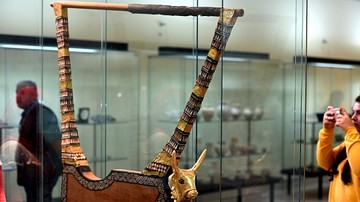
Image
The Golden Lyre of Ur at the Iraq Museum
This is the finest among all lyres found at the Royal Cemetry at Ur and was given to the Iraq Museum; the other lyres were divided between the British Museum in the UK and the Penn Museum in the USA. The head of this bull is a replica and...
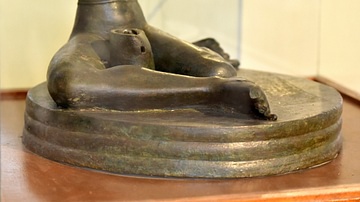
Image
The Bassetki Statue at the Iraq Museum
This statue weighs about 150 Kg and is made of pure copper, a more difficult casting that requires a much higher temperature than that of bronze. The diameter of the rounded pedestal is about 67 cm and the height of the surviving statue is...
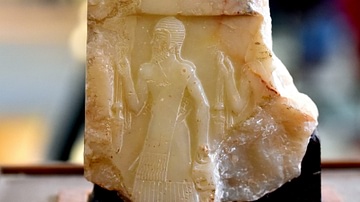
Image
Akkadian Soldier on Naram-Sin Victory Stele from Wasit
This alabaster stele (with different registers) was fragmented when originally found and only three fragments have survived; two are in the Iraq Museum in Baghdad and one is in the Museum of Fine Arts, Boston, USA. The stele commemorates...
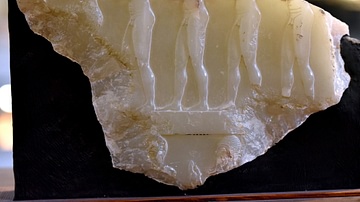
Image
Naram-Sin Victory Stele from Wasit
This alabaster stele (with different registers) was fragmented when originally found and only three fragments have survived; two are in the Iraq Museum in Baghdad and one is in the Museum of Fine Arts, Boston, USA. The stele commemorates...
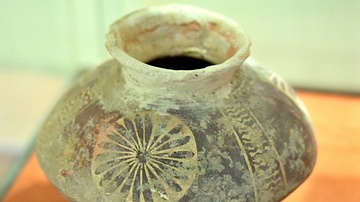
Image
Vessel from Al-Masihli
This pottery vessel was found at Al-Masihli (Arabic: المسيحلي), north of Baghdad, Iraq. The surface is painted and decorated with different geometric shapes. 3500-2800 BCE. On display at the Iraq Museum in Baghdad.

Book Review
The Looting of the Iraq Museum, Baghdad: The Lost Legacy of Ancient Mesopotamia
In April of 2003, the Iraq Museum in Baghdad was looted of over fifteen thousand priceless artifacts. In only two days, from the 10th to the 12th of April, historical artifacts from ancient Sumerian cities like Uruk, Ur, and Eridu, as well...

Article
Visiting the Ancient City of Babylon
We had a 4-day national holiday. Meaning what? No clinic and no hospital! I said to myself, “It's been a long time since I have visited Babylonia.” I drove my car for about 11 hours, continuously. Finally, I was there. I went to my uncle's...

Definition
Saladin
Saladin (1137-93) was the Muslim Sultan of Egypt and Syria (r. 1174-1193) who shocked the western world by defeating an army of the Christian Crusader states at the Battle of Hattin and then capturing Jerusalem in 1187. Saladin all but destroyed...
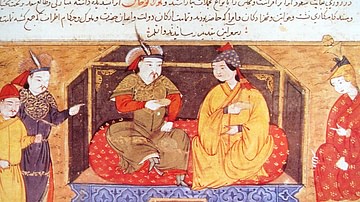
Definition
Ilkhanate
The Ilkhanate (or Ilqanate, 1260-1335 CE) was that part of the Mongol Empire (1206-1368 CE) which mostly covered what is today Iran and parts of Turkmenistan, Turkey, Iraq, Armenia, Afghanistan, and Pakistan. Established by the Mongol general...